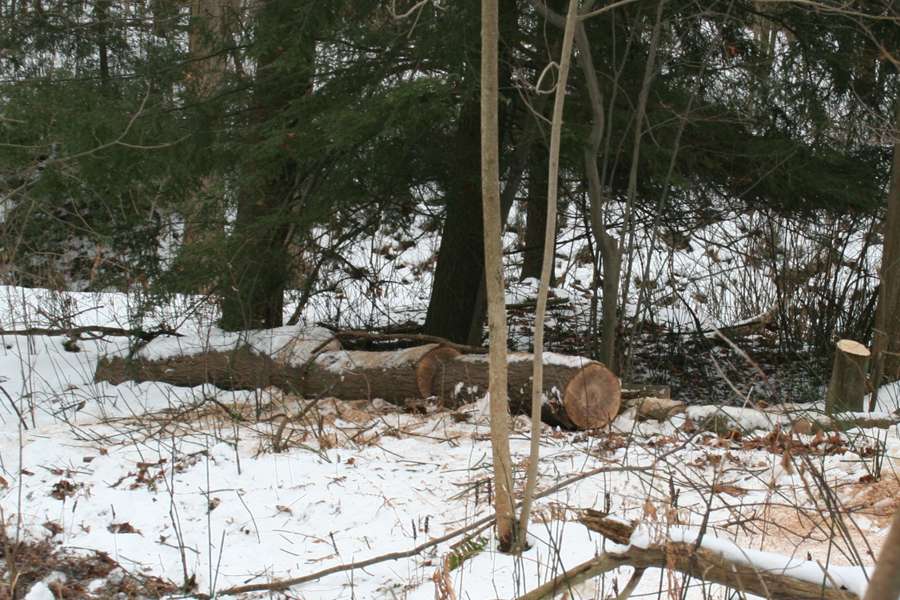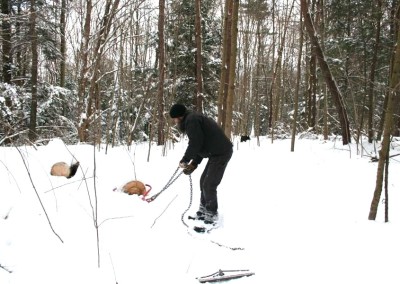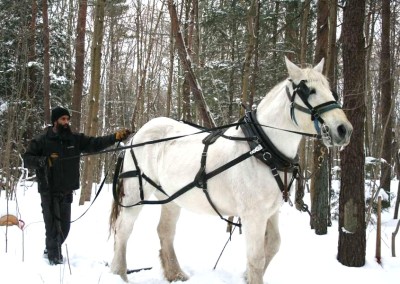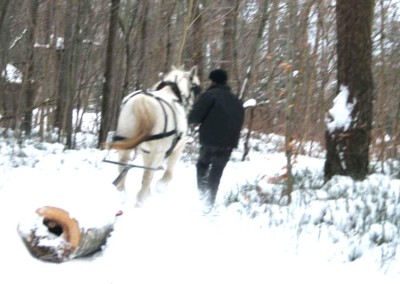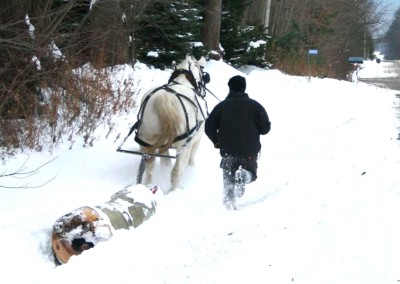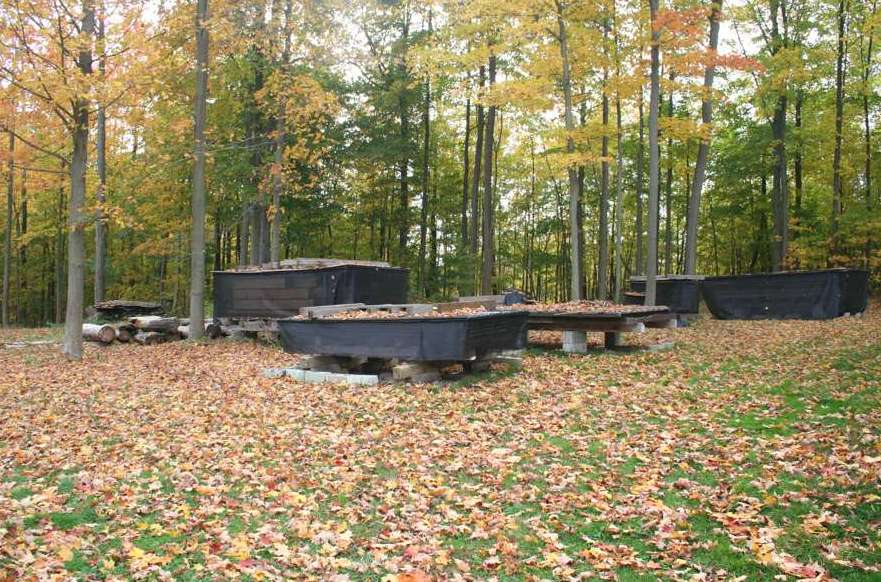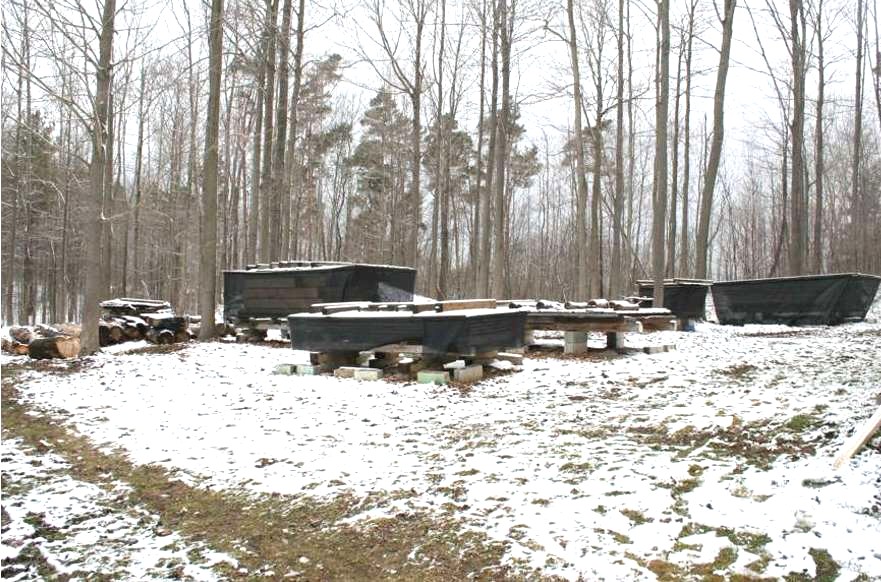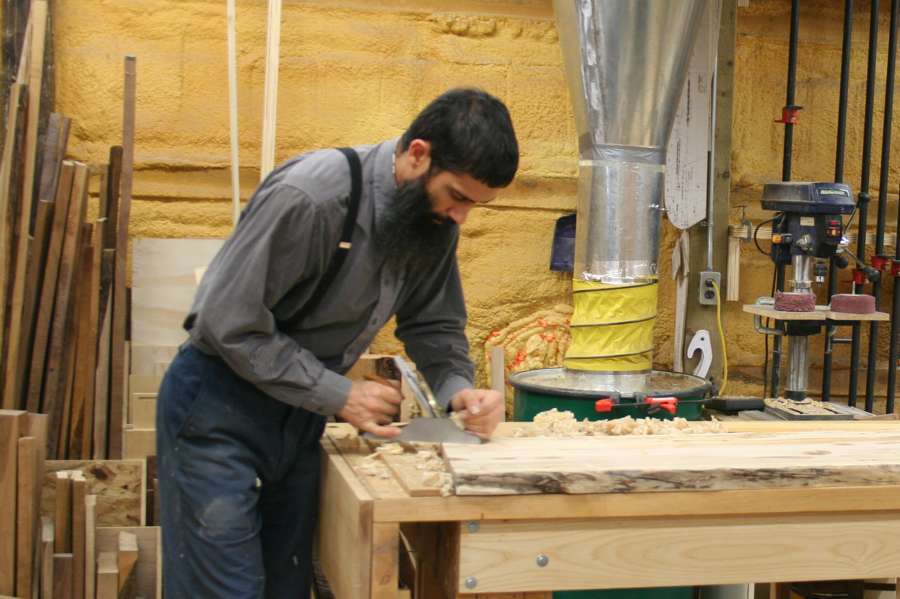The Forest
Making wood furniture starts in the forest —where trees grow. I get lumber from my own carefully managed forest or salvaged trees nearby. Ironically, some of the most interesting looking boards come from trees that would be spurned by a lumberyard due to their irregularities (it’s often that way with people, too). Others come down in storms. With careful work, these can become beautiful furniture.
When I harvest my own trees Dora helps me drag them home. It’s fun, it’s quiet, it’s great exercise—and she leaves hoof prints not carbon footprints.
Milling
Drying
Air drying takes a long time but the results are better than drying in a kiln. The boards are left outside (protected but well ventilated) for at least two years. After that we bring them into the shop, sticker-stack them, and let them finish drying slowly over the winter months. The dry, in-floor heat of the shop brings the moisture content down to a perfect 6 or 7 percent without any undue stress on the wood.
Tool Work
Yes it can often take longer to work with hand tools, but hand tools still yield the best results. Hand tools do exactly what you make them do, and a cut surface is much better than a sanded one. First, a cut surface is incomparably smoother: a finely honed blade cuts the wood fibers; whereas sandpaper scratches the surface in gradually finer scratches, leaving a muddied appearance to anyone with an eye for fineness. Second, you can always get precisely the shape you want, in all its subtle varieties. And third, the graceful textures left by gently overlapping toolmarks add to the tactile enjoyment of the piece, as well as testifying to its authenticity.

